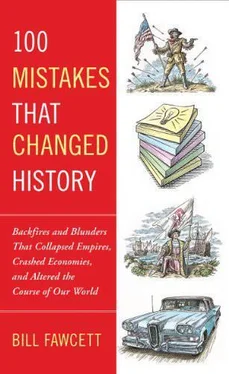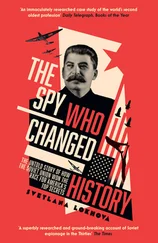Many in the U.S. Navy submarine service waited and even trained for dealing with Japanese convoys. They never had to. By November 1944, fifty-nine Japanese ships were sunk, mostly merchants or transports. By the end of the war, an amazing 54 percent of the total Japanese merchant capacity had been sunk. Most of the rest cowered in port. For a nation that totally depended on imported metals, oil, and even food, the fact they never instituted a simple policy that had been consistently successful for more than 2,000 years and had just proven amazingly successful for their opponents in the Atlantic is a mistake almost beyond understanding.
Japanese production and even the development of weapons was slowed dramatically by a continual lack of resources. The Imperial Air Force was crippled not only by a shortage of new aircraft due to a lack of metals, such as aluminum needed to build them, but also from an aviation fuel shortage so severe that pilot training was curtailed from weeks to a matter of hours. No matter what the bushido reasoning for the Japanese failure to institute convoys, the mistake allowed the American and Allied submarines to effectively destroy the very lifeline carrying the raw materials Japan needed to carry on the war. With more surviving merchant ships, the Japanese might well have slowed the American advance to the home islands and may even have negotiated something other than total surrender.
80. OBEYING ORDERS TO A FAULT
He Who Hesitated
1942
The Battle of Midway Island is often considered the turning point in World War II in the Pacific. It took the Japanese several mistakes to bring this about, including one in planning by their great naval genius Isoroku Yamamoto. But his was not the error that changed the nature of the entire Pacific theater in 1942. That one specific mistake was left to the commander on the scene.
A little more than six months after their attack on Pearl Harbor was a heady time for Japan and the Imperial Japanese Navy, often referred to as the IJN. Victory seemed automatic, with armies surrendering at Singapore and Bataan and the quick capture of islands all over the Pacific. They had challenged the mighty United States and seemed to be winning. Morale in the navy and among the Japanese people had soared, and the militarist leaders found themselves popular. Then all that joy came crashing down, due to the daring bombing raid by Jimmy Doolittle and sixteen B25s on Japan itself. It was not that the raid did any real damage or that several of the bombers were not shot down, but rather it was the sheer fact that the home islands were bombed. When the war had been both successful and distant, it was one thing; when the Japanese saw their home islands attacked for the first time in centuries, it was a shock and an embarrassment.
Something had to be done to restore the prestige and face lost by the raid. The decision was to accomplish this and more by invading Midway Atoll. Yamamoto’s real hope was that the much stronger IJN could draw what remained of the American navy into a decisive battle and destroy it. This was actually a good strategy. If Midway fell, it would be almost impossible for the U.S. Navy to protect the Hawaiian Islands. If the atoll was occupied, hundreds of land-based aircraft from Midway would be able to support an IJN attack on Hawaii. The Pacific fleet would have to move to San Francisco. With the U.S. Navy gone and the air base at Midway in Japanese hands, the Hawaiian Islands were as good as lost. So the Japanese knew correctly that the American navy had to react to any attack on Midway.
At this point in the Pacific theater, the U.S. Navy was definitely not in a strong position. The IJN was correct in thinking they had almost every advantage. The odds were against the Americans, who had so few surviving large ships that a surface battle was inconceivable. This allowed two fast battleships to be assigned to protect the Kido Butai, the main carrier force. Those two ships alone had more heavy gun firepower than the U.S. Navy had in the Pacific. But the Japanese also had another major battleship force a day behind the Kido Butai, and that force included the Yamato , the world’s largest battleship. Added to this was the painful fact that at this point in the war the Japanese surface ships were newer, often faster, and all better armed than their U.S. Navy counterparts.
The Japanese also had more than twice as many fleet aircraft carriers in the Pacific, with eight IJN to just three U.S. carriers. Worse yet, there were three only by including the badly damaged Yorktown . After the Battle of the Coral Sea, this carrier was in such poor condition that when she sailed out of Pearl Harbor toward Midway, a number of frantically working repairmen were still on board.
The U.S. Navy had one very real advantage. The surprise attack on Midway was not a surprise. The cryptography division on Hawaii, under Commander Joseph Rochefort, had managed to break the IJN’s code. While the United States could not read all of every message, they were able to determine, and then use a ruse to confirm, that Midway Atoll was the target and when it would be attacked. This allowed what remained of the Pacific fleet to sail days sooner than a just-reacting fleet would have left Pearl Harbor. The U.S. Navy also could ignore a real but unimportant attack on two islands off the Alaskan coast, Attu and Kiska. Even so, the odds remained four highly experienced fleet carriers and a light carrier to the U.S. Navy’s three carriers. And there was the Japanese massive dominance in surface combat ships.
After the war, the Japanese attempted to understand why their admirals acted as they did in the attack during the battle for Midway Atoll. The eventual conclusion was what they called “victory disease.” By this they meant overconfidence and disdain for your opponent based on past victories. This was a concept that might well have been studied almost thirty years later by the U.S. military leaders who confidently expected to overwhelm the Vietcong in weeks. What directly resulted from this attitude was an overly complicated battle plan that split the IJN into several parts. Then, even though he wanted a decisive victory, the Japanese admiral chose this time to split off two of his eight fleet carriers to support the unimportant Alaskan invasion whose sole purpose was to—unsuccessfully, thanks to Rochefort—distract parts of the U.S. fleet. Then he sent away two more carriers to Japan for needed, but not vital, repair and refurbishing. So by plan and before a bomb fell, half the IJN’s aircraft carriers were not where the planned decisive battle was to take place.
But that overly ornate battle plan—the splitting of forces and the overconfidence shown by the Japanese navy at every level—was not the mistake that made all of the difference. The error that ended the IJN’s dominance of the Pacific and halted the Japanese empire’s expansion was made not by Admiral Yamamoto, but by the commander of the Kido Butai carrier force itself, Admiral Chuichi Nagumo.
Now, the character of the carrier fleet’s commander was a major factor. Unlike the innovative Yamamoto, Nagumo was a competent but by-the-book officer. When your strategy is working and you have serious superiority in numbers, this is not a problem. But what you don’t learn when you command by the book is how to make vital decisions quickly when disaster looms. But Yamamoto had given his carrier commander detailed orders on what to do in a range of situations. That made Nagumo’s consistent obedience to his orders a positive thing because Yamamoto could count on him to do what he was told. But his elaborate plan meant that the brilliant and decisive IJN commander was hundreds of miles away and under radio silence during the entire Battle of Midway.
Читать дальше












